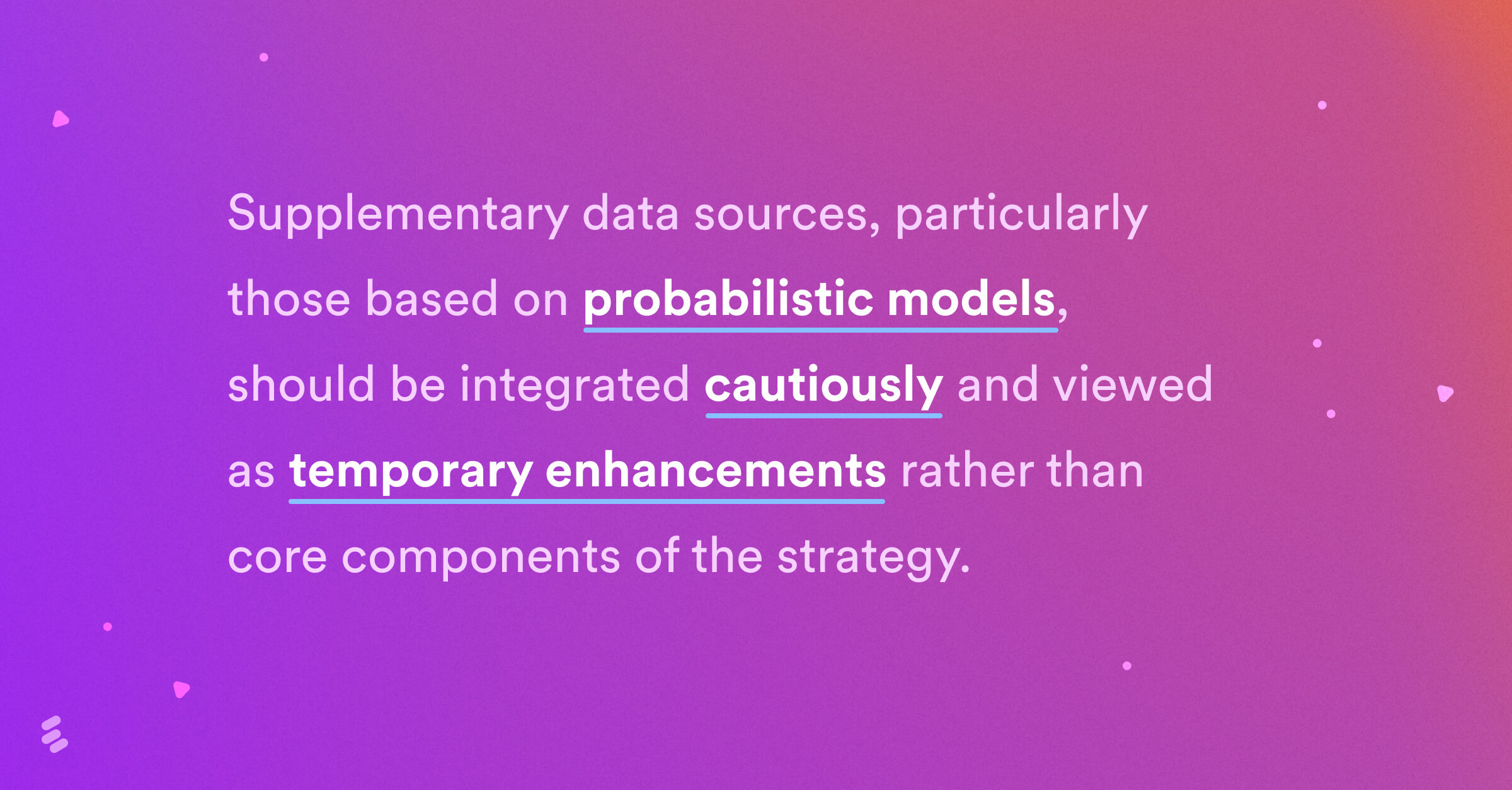Adapting to a post-third-party cookie world: Navigating the shift with third-party data and dynamic consumer identity strategies
March 4, 2024

In 2024, the digital landscape is undergoing significant transformation due to the phase-out of third-party cookies, which were once central to tracking consumer behavior across various online platforms. This shift necessitates the adoption of new technologies and strategies for maintaining a comprehensive view of consumer activities and preferences.
As companies integrate these new technologies, there’s an increased reliance on third-party data to fill the gaps left by the absence of third-party cookies. However, the integration of third-party data presents its own set of challenges and considerations. One of the primary issues is understanding the origins and reliability of this data, particularly when it is based on probabilistic methods, which infer consumer behaviors and traits without direct evidence. This method contrasts with deterministic data based on concrete, verifiable consumer actions or information.
To navigate these challenges effectively, businesses must adopt a dynamic and nuanced approach to data integration. Specifically, they should view the inclusion of probabilistic third-party data as a temporary measure rather than a permanent solution. This approach is particularly relevant in the early stages of the consumer funnel, where the data can be used to broaden reach and fill in gaps in consumer knowledge with minimal risk. However, this data should be applied cautiously, as its probabilistic nature means it is inherently less reliable than deterministic data.

As consumers progress further down the funnel, becoming more known and engaged, the reliance on probabilistic data should decrease. The focus should shift towards deterministic data grounded in consumer behavior and consent at these deeper stages. This shift is crucial to ensure that messaging and engagement strategies are based on accurate and relevant information, thereby reducing the risk of alienating consumers through inappropriate or inaccurate targeting.

Ultimately, the key to effective identity strategy in the post-third-party cookie era is centralizing deterministic identity models as the foundation of consumer profiling and engagement. Supplementary data sources, particularly those based on probabilistic models, should be integrated cautiously and viewed as temporary enhancements rather than core components of the strategy. By adopting this balanced and adaptive approach, businesses can continue to deliver personalized and compelling consumer experiences while navigating the complexities and challenges of the evolving digital landscape.



